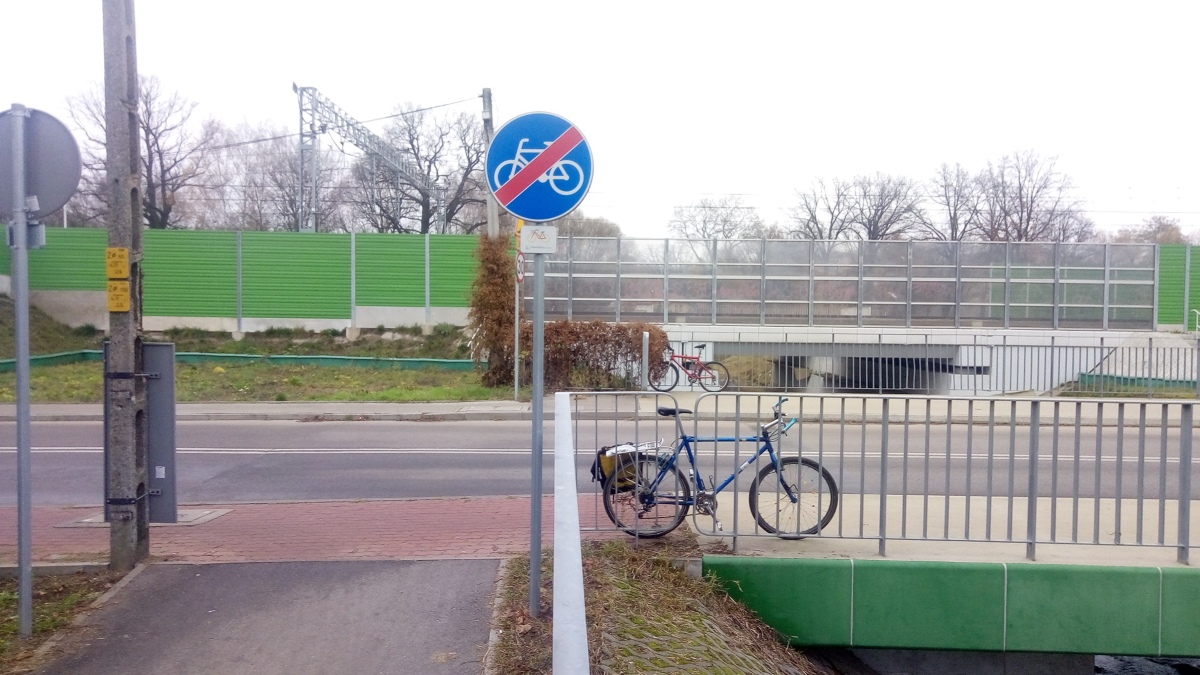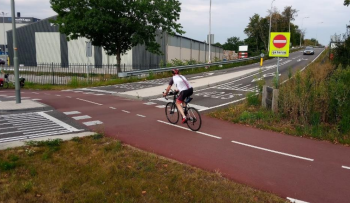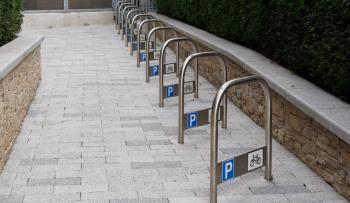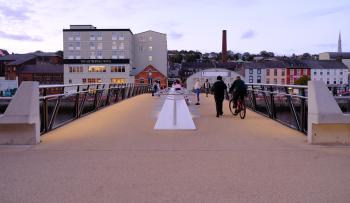
ECF analysis: TEN-T proposal represents important step forward for cycling, but also some missed opportunities
The EU’s flagship transport policy – the Trans-European Transport Network – is up for revision and a proposal by the Commission to properly define “active modes” and require urban nodes to adopt Sustainable Urban Mobility Plans is a welcome development.
The proposal for a revised Trans-European Transport Network (TEN-T) regulation by the European Commission, presented on 14 December as part of the “Efficient and Green Mobility” package, marks an important step forward for cycling in urban areas, according to analysis from the European Cyclists’ Federation (ECF).
As the EU’s flagship transport policy, TEN-T is a network of European roads, railways, inland waterways, ports and airports. Its multibillion-euro budget enables the TEN-T policy to strongly influence travel patterns of European citizens and as such has the potential to dramatically improve the sustainability of transport across the continent.
In this article, we highlight some of the positive elements in the revised TEN-T proposal as well as some missed opportunities that ECF will continue to advocate for as this proposal goes to the European Parliament and member states in the Council of the EU for negotiation in 2022.
A definition of “active modes”
A new element in the revised TEN-T proposal is the definition of “active modes” in Article 3. It defines active modes as “the transport of people or goods, through non-motorised means, based on human physical activity.”
Though seemingly mundane, this inclusion is important because it is the first time the definition has been included for consideration in the TEN-T policy. It sets an important basis for how member states are required to understand what active modes are.
A boost for cycling in urban areas
One very positive element in the Commission’s TEN-T proposal is the requirement in Article 40 that “urban nodes” adopt a Sustainable Urban Mobility Plan (SUMP) that “includes notably measures to integrate the different modes of transport, to promote zero-emission mobility including sustainable and zero-emission urban logistics, to reduce air and noise pollution.”
This is where the TEN-T proposal must be read together with the new European Urban Mobility Framework (UMF), published on the same day. The UMF very clearly puts a high priority on the need for cities to implement sustainable and active mobility solutions as a means to reduce transport CO2 emissions, reduce air pollution and congestion, improve road safety and provide more transport options to inhabitants. In addition, the Commission proposes that urban nodes be required to develop their SUMPs so that they demonstrate how they will improve sustainable, active and shared mobility options, and that EU funding for mobility projects be made preferential for urban nodes that have SUMPs or similar planning in place.
Read in conjunction with the UMF, this is where the TEN-T proposal seems strongest for cycling, reflecting years of advocacy by ECF and its partners towards the Commission to see systematic policy improvements for cycling in urban areas. If kept in the final version agreed by Council and Parliament, we would expect these requirements to ensure that TEN-T projects in urban nodes successfully incorporate cycling infrastructure to achieve the priorities and aims set out in the UMF.
This could lead to significant advances for cycling in the more than 400 urban nodes identified by the Commission.
What ECF will continue to advocate for
ECF will continue to advocate for the inclusion of EuroVelo, the European cycling route network, into TEN-T. A cycle route network is currently excluded from the current proposal, which in our view is a missed opportunity to strengthen the crucial role cycling must play in delivering on the EU’s overall sustainable mobility ambitions.
EuroVelo provides real benefits to Europe’s transportation system as well as having enormous symbolic value. It is also fast developing across the continent as a fully-fledged backbone to national and regional cycle route networks. Its incorporation into TEN-T would ensure that EuroVelo routes continue seamlessly through urban nodes and rural areas, and that TEN-T projects can more efficiently and cheaply include the development of related infrastructure.
While the TEN-T proposal does introduce a definition of active modes, ECF would like to see that the creation of networks for active modes be included into the proposal during its negotiation between Parliament and Council. As it stands, neither the general provisions nor the infrastructure requirements for specific modes already included in the TEN-T oblige future projects to consider the needs of active modes such as cycling.
In Article 41 of the TEN-T revision proposal, the “increase of the modal share of public transport and of active modes” is listed as an additional priority for TEN-T projects in urban nodes. This is important, but we would like to see that other TEN-T projects also be required to provide for future cycling connections where necessary. Otherwise, we fear that public funding will continue to be misspent on doing the same infrastructure works twice, as in the case of the railway upgrade between Brussels and Leuven in Belgium.
We would also like to achieve more for locations outside urban nodes. We see it as very positive that the TEN-T proposal specifies in Article 40 that urban nodes are required to create “multimodal passenger hubs to facilitate first and last mile connections.” The UMF stipulates further that such hubs should include good bicycle parking and shared mobility options. ECF would like to see this further strengthened by going beyond urban nodes to ensure there are good active mobility connections for places in-between them.
There is an enormous potential of combining cycling and train trips when starting a journey in a smaller town or rural area where public transport offers are not as developed as in major cities. We think the TEN-T policy can promote this further with amendments to the Commission’s revision proposal.
Lastly, we are concerned that some of the provisions in the TEN-T proposal might unintentionally increase the barrier to cycling. For example, the proposal requires all TEN-T roads to be upgraded to motorway standards: dual carriageways that eliminate all at-grade crossings with bicycle paths or footpaths. This is not balanced by a requirement to provide a sufficient density of safe and comfortable crossings for cycling. It also fails to consider the reality of remote, insular and peripheral areas in the EU where TEN-T roads often are the only roads in the area and serve many different transport modes. Adding cycle tracks to these roads would be much more beneficial for safety and connectivity than reconstructing them into dual carriageways that are impassable by pedestrians or cyclists.
Next steps
Cycling has enormous further potential for alleviating congestion in and around urban nodes, expanding the catchment area of public transport and decarbonising both daily commuting and tourism, among other things. But this requires the right policies and infrastructure.
We think the Commission’s TEN-T revision proposal has made some very important headway for cycling, particularly when viewed in conjunction with the UMF. But we still see areas where it can be further improved.
On this basis, ECF will continue its advocacy with the European Parliament and Council, as they are slated to begin negotiating on the content of the Commission’s proposal in 2022. We will be working with Members of the European Parliament and member state representatives to ensure that the TEN-T is as strong as possible for cycling, matches the EU’s ambitions to create a transport policy fit for the 21st century and meets all the challenges posed by the climate crisis.
Regions:
News category:
Network/Project Involved:
Contact the author
Recent news!
Contact Us
Avenue des Arts, 7-8
Postal address: Rue de la Charité, 22
1210 Brussels, Belgium









